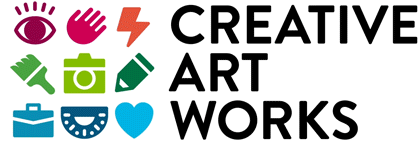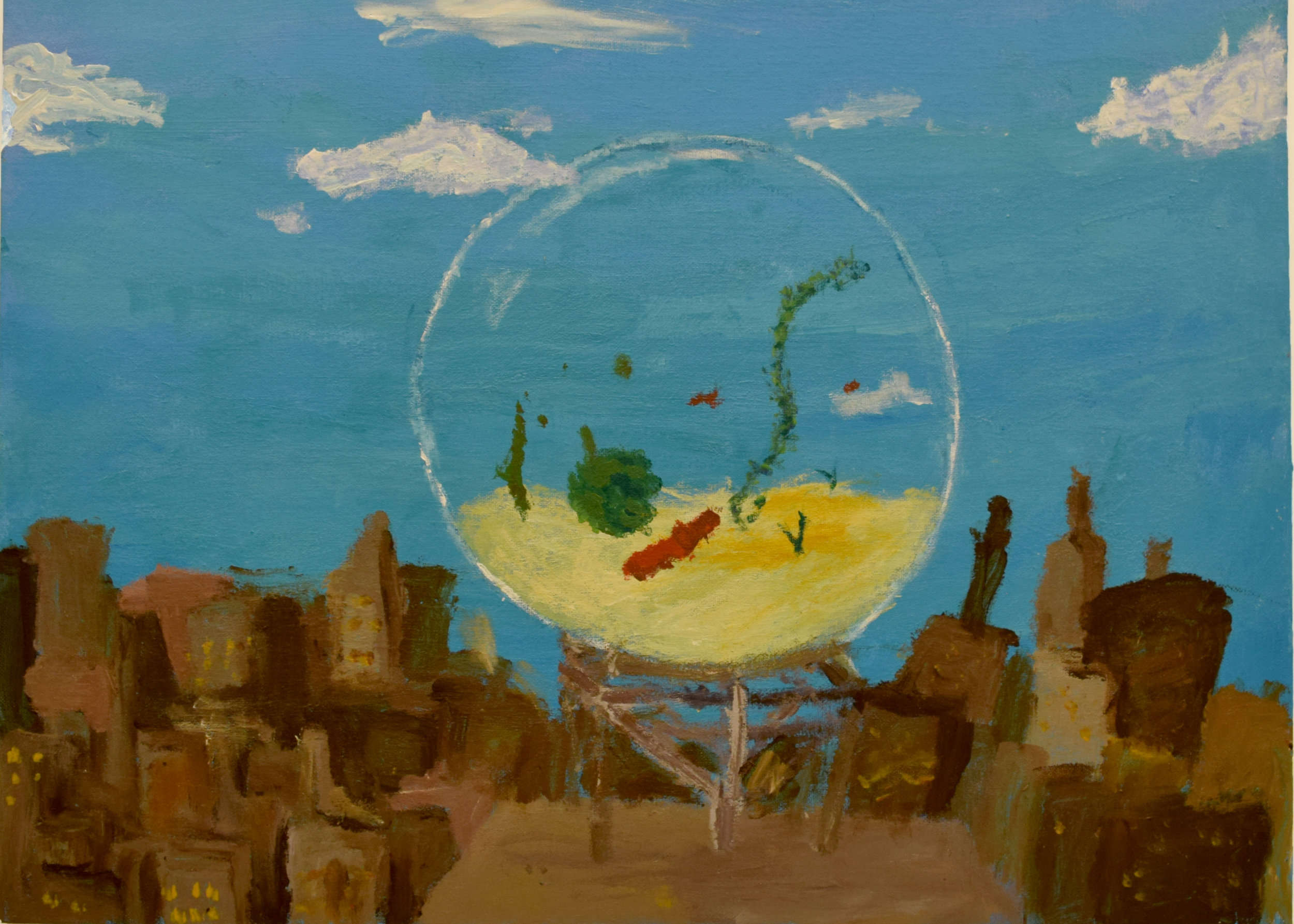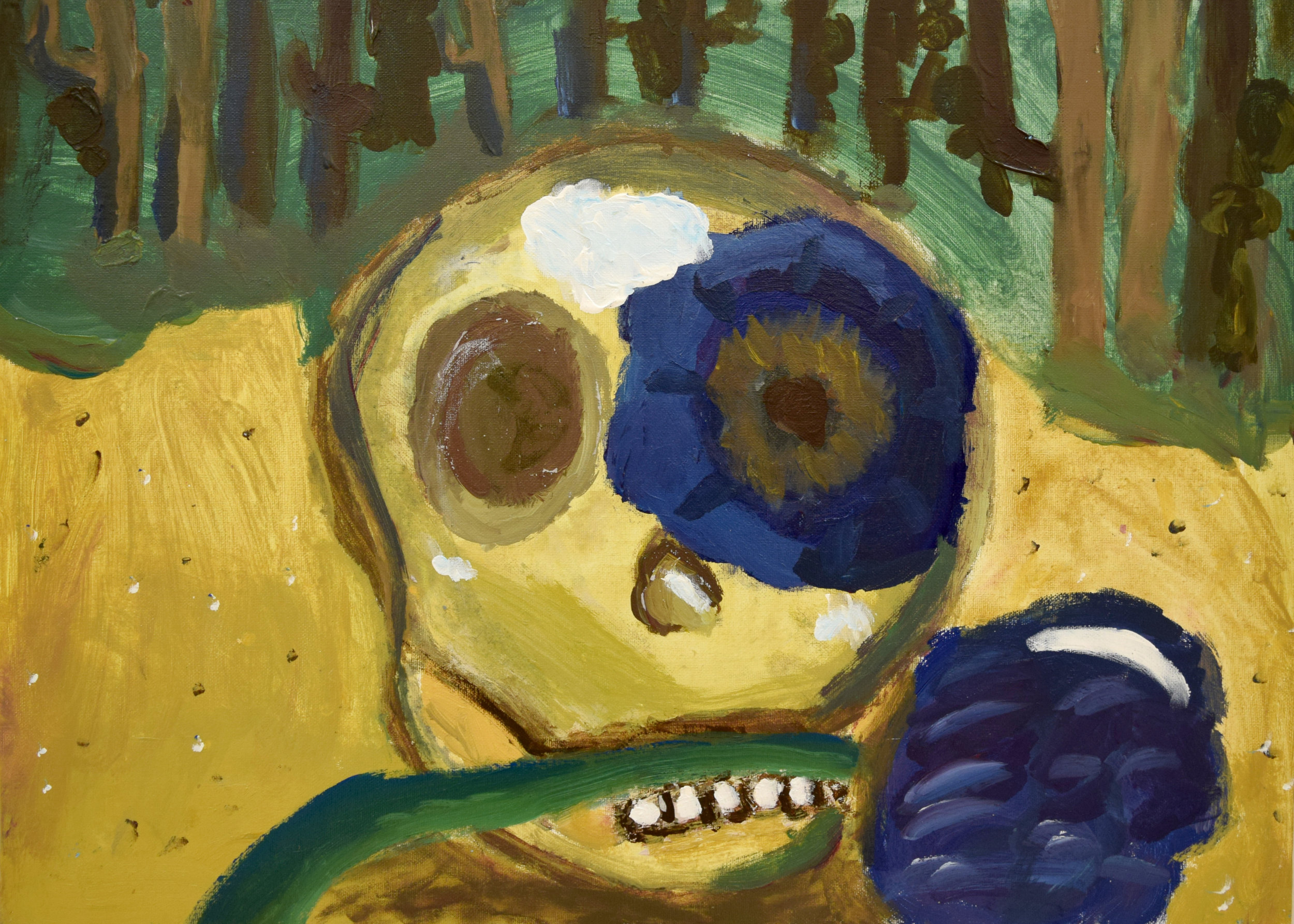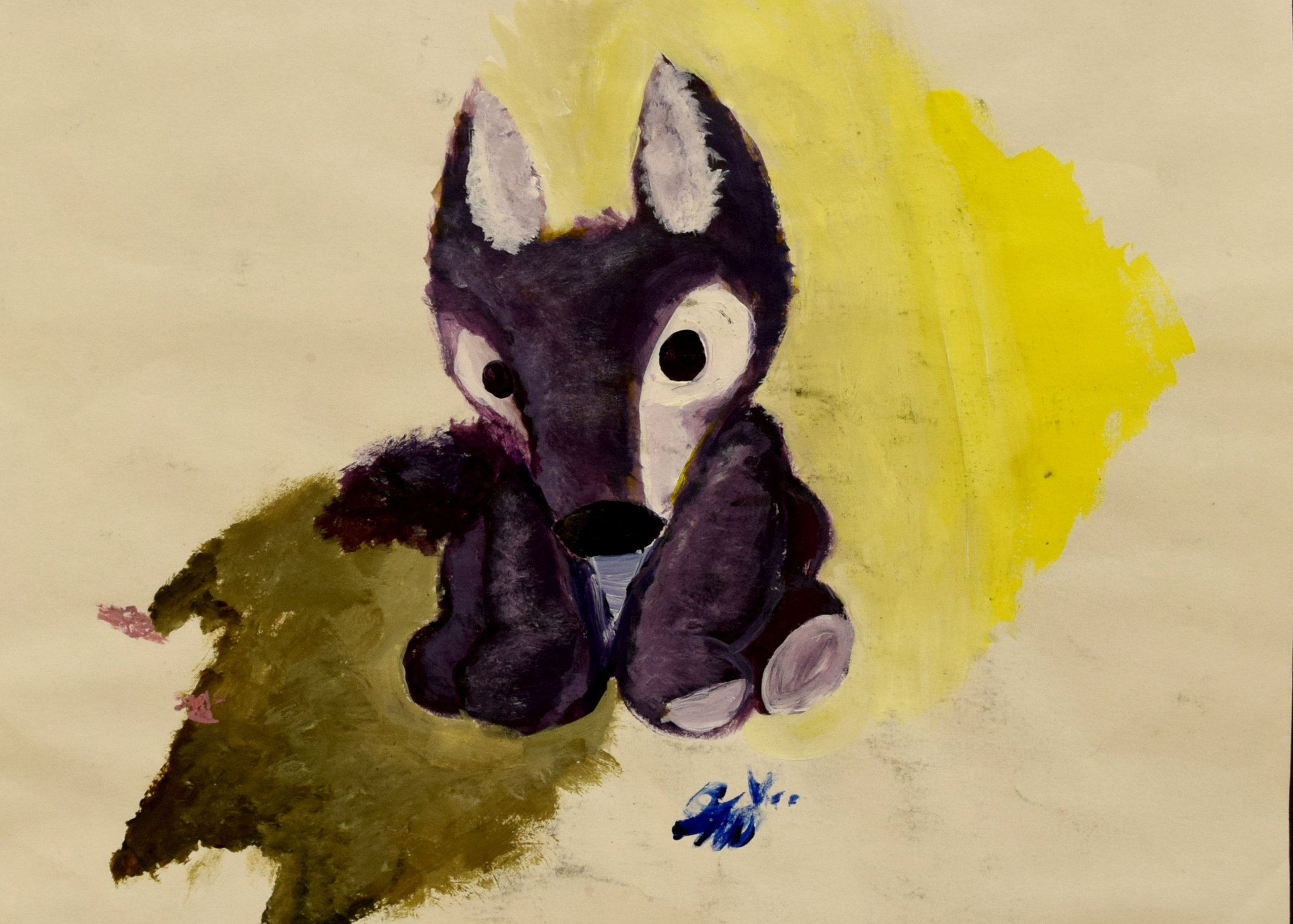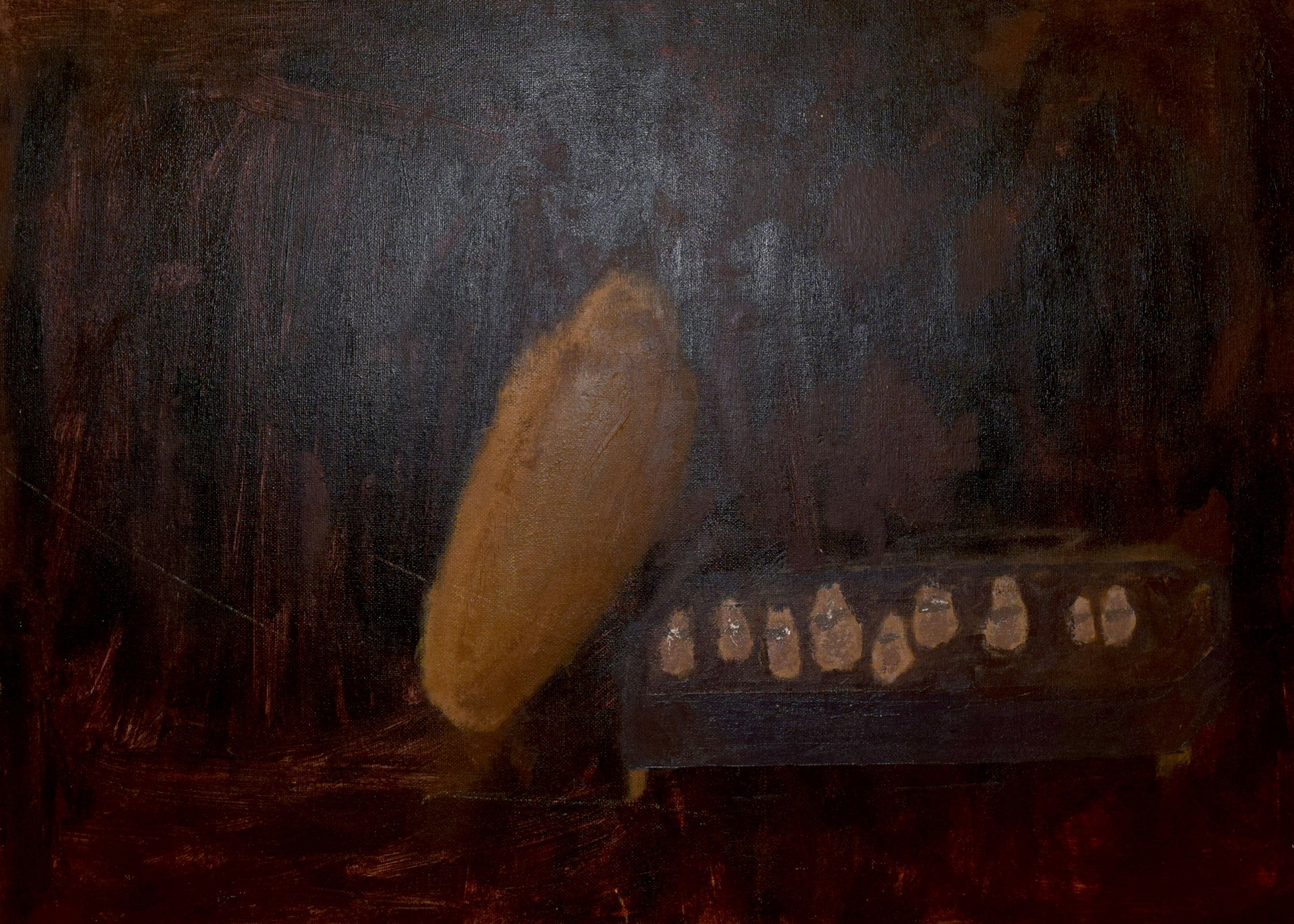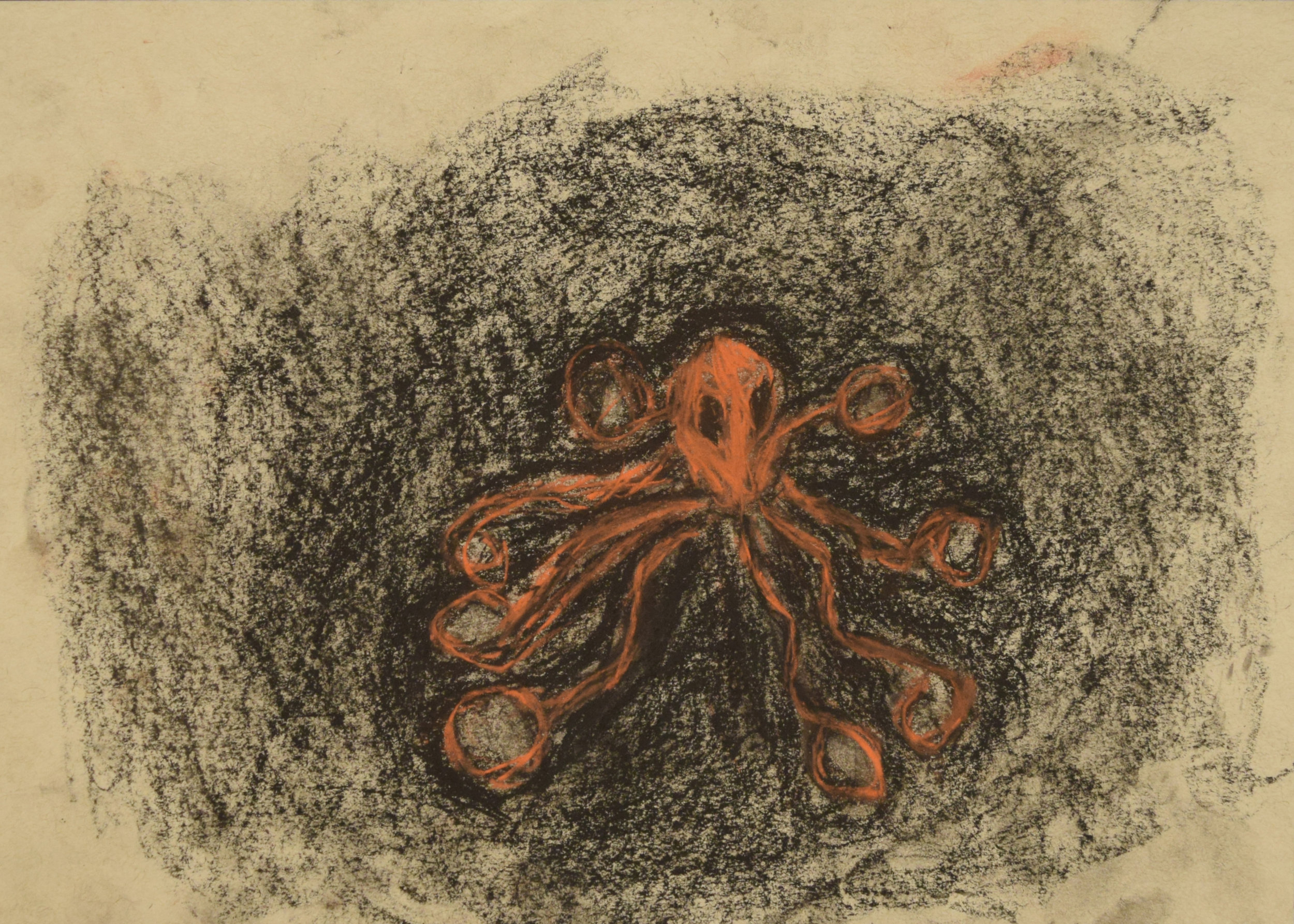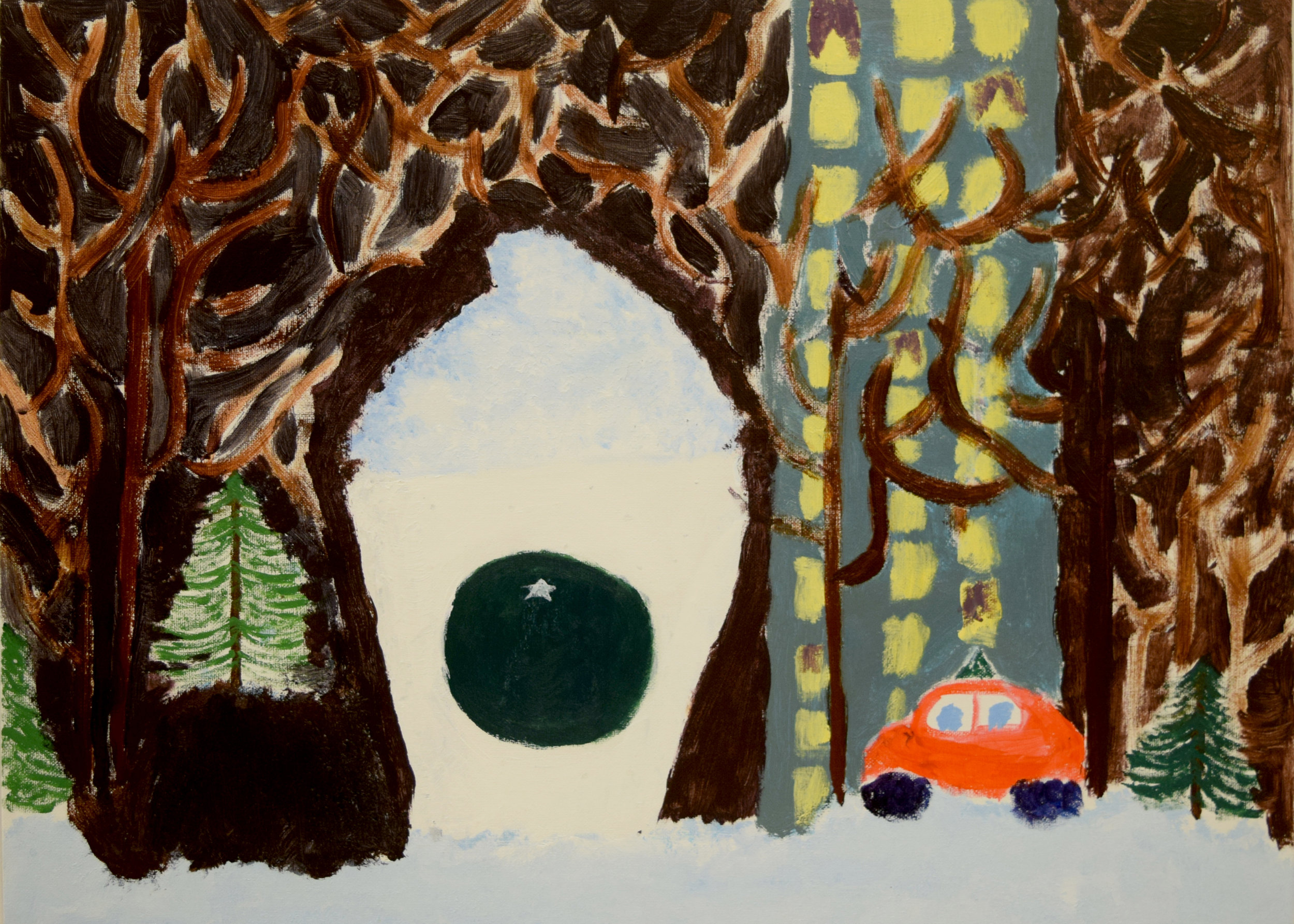There Are No Mistakes: A Conversation with Teaching Artist Zack Podgorny
Zack Podgorny gives a watercolor demonstration to middle school students in the after-school painting and drawing program at PSMS 278.
Zack Podgorny has been a Creative Art Works Teaching Artist for two years. He currently teaches the after-school drawing and painting program at PSMS 278 in Inwood. Zack holds a BA from the Tyler School of Art at Temple University and an MFA from Ohio State University. His professional work includes painting, video and performance art. CAW sat down to talk with Zack about art, teaching, communication and the value of mistakes.
Q: Tell us about a Teaching Artist who inspired you.
I studied under artist Ann Hamilton in grad school. She pushed me to make art about things that made me uncomfortable. I think she might have borrowed that idea from Allen Ginsberg, but the advice really opened up my practice. I tapped into childhood memories for source material. I had always thought of myself as a painter, but I began to explore video and performance art. A world of possibilities opens up to you when you step outside your comfort zone.
Q: What is one thing you learned from your teachers that you use in your classes?
As an undergraduate, I studied with Stanley Whitney, who taught me to embrace the unpredictable nature of color. Stanley said you have to admit that some things are beyond your control. When your paints don’t do what you want them to do, you have to turn that into an opportunity.
That’s one of the axioms in my classroom, “There are no mistakes in art!” When Ayla [CAW Teaching Artist Assistant Ayla Rexroth] or I give feedback, it's always a conversation, it's never about "right or wrong." I love it when students think they made a mistake, and we'll ask, "How can you make use of that? It might not be what you had in mind, but maybe you can transform it into something you like." The open-ended nature of art-making really resonates with students.
Q: What is a typical afternoon like in your program at PSMS 278?
There is a playfulness to the environment. The students like to talk and joke around, and they’ve been known to break out into spontaneous singing, but there is also a level of focus on their work. They ask for feedback. They ask a lot of questions. A student will show me a flat drawing, and I might suggest adding shading or creating different line weights, and suddenly the drawing will have a sense of solid dimension. And then they will take that idea and apply it to their next drawing. Ayla and I geek out over their progress.
There is a structure in the class, but there is independence within the structure. I like a conversational environment. I don’t ever want it to be me just lecturing – there has to be multiple entryways to learning. I teach techniques, but students have to apply their own creativity, make their own connections, and try things out.
Click on the image above to advance a slide show of works from students in the CAW painting and drawing program at PSMS 278.
Q: What do you like best about teaching art to young people?
My students ask questions that open me up to new ideas. I especially love questions from students who don’t have much art experience, because they ask questions that force me to get creative with my answers. I was teaching blind contour drawing – that’s when you draw a picture without looking at your drawing hand or your paper. I had a basketball player who didn’t get the point of the exercise. I told him it’s about muscle memory. It’s like learning to shoot a jump shot. You practice the motions over and over until you can do them without thinking.
Imagine I 'm A Genie, by Zachary Podgorny, 2017, watercolor, oil, balsam, coin, shards of glass, on linen, 24 x 20 inches.
Q: What inspires your own art-making?
I find a lot of inspiration for my paintings in poetry and music. I especially like the spontaneity of free-style rap. I really liked Salt, a book-length poem, by Nayyirah Waheed. I once painted a response to a poem by Kendra DeColo and sent it to her. She wrote a poem about my painting in reply. There’s a long tradition of art correspondence. The ancient Greek word for it is, “ekphrasis,” which literally means to speak out about something.
You can view Zack's on-line portfolio at www.zaharvaks.com.
Creative Art Works’ after-school program at PSMS 278 is supported, in part, by public funds from the New York City Department of Cultural Affairs and the Cultural After-School Adventures (CASA) Initiative in partnership with the City Council and Council Member Ydanis Rodriguez.
